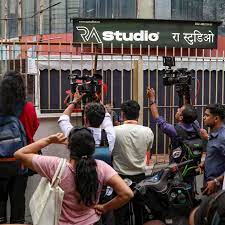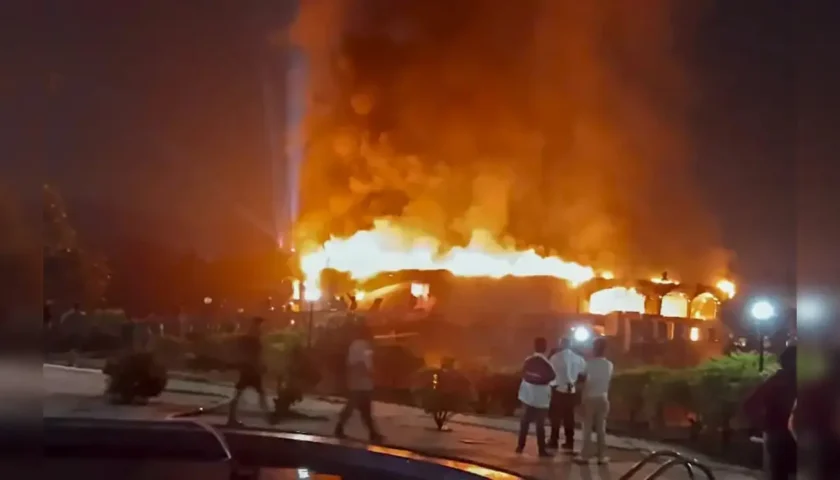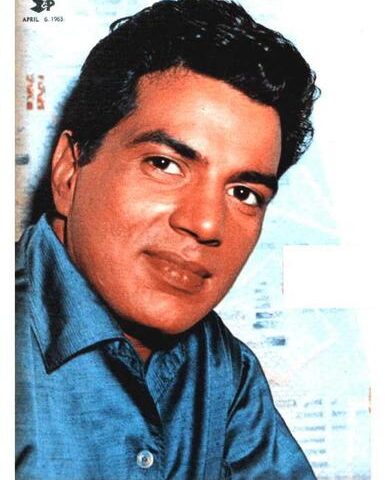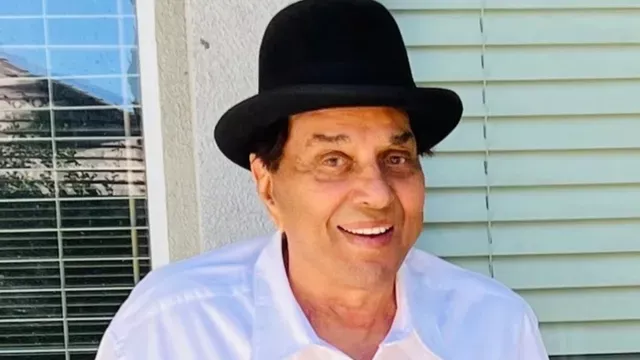Mumbai hostage-taker’s high-tech trap: Motion sensors, cameras & failed face-off with police
By: Javid Amin | 31 October 2025
On an ordinary Thursday afternoon in Mumbai, a routine audition call took a horrifying turn. A man named Rohit Arya — aged about 50 — lured 17 children (aged roughly 10-15) and two adults into a studio in the Powai area of the city. Inside, he revealed a deadly plan: he had rigged the premises with motion sensors and cameras, threatened to burn the place down, and held them hostage for hours under the guise of a casting session.
In the ensuing standoff, teams from the Mumbai Police, the Quick Reaction Team (QRT), the fire brigade and bomb squad mobilised. After negotiations failed, police used a back-entry route, neutralised Arya with a bullet wound to the chest and extracted all the children unharmed.
This case raises disturbing questions: about how a supposed audition became a hostage trap, about how early warning signs were missed, about how technology was used by the hostage-taker — and about systemic failures that may have pushed a man into desperation. Below, we break down what happened, how it happened, why it happened and what it means.
Setting the Scene: Where & How It All Began
The Location & Premise
The incident occurred at RA Studio, situated in the “Mahavir Classic” commercial-cum-residential building in Powai, Mumbai.
Arya had rented the studio four days earlier, under the pretext of conducting acting auditions for a web series. He invited boys and girls aged between 10 and 15 (in many reports children ages vary slightly).
The Invocation of Trust
Parents and children arrived believing this was a legitimate audition. One witness told reporters that earlier there had been auditions for 2-3 days at the location.
At around 1:30 pm, a distress call reached the Powai police station when the children failed to emerge for lunch and parents outside grew anxious. Actually, some reports note anxious parents waiting earlier (around 1 pm) had noticed that their children had not returned.
The Quiet Trap
What followed was no random act of violence, but a meticulously planned trap. Arya had installed motion sensors and connected them to his mobile phone, and possibly cameras inside the premises. His plan: any movement towards the front entrance would alert him, giving him early warning. This delayed police entry and gave him control over the room.
He threatened that if police tried to enter, he would set the place ablaze using flammable spray and gel items. He was also armed with an air-gun.
The Standoff: Three Hours of Tension
Early Negotiation Phase
From arrival around 1:45 pm, police began talks with Arya. He insisted on a particular format: he wanted a senior inspector to speak with him through a transparent plastic barrier, and remain within his line of sight. He threatened that if the officer moved out of his view, he would break off negotiations.
Meanwhile, parents and security guards tried to get access — some children were visible crying behind glass windows. One local resident observed children pleading for help through those windows.
The Police Strategy
While negotiators engaged Arya, parallel teams planned an entry route. Recognising that the studio’s front entrance was rigged with sensors and under his surveillance, the police looked for alternate access. Two teams, assisted by the fire brigade, moved via duct lines and bathroom vents. One team cut through a glass wall, another entered through a bathroom vent. It was through this rear/back entry that the police gained surprise.
The Critical Moment
At about 3:15 pm, the police teams commenced the entry. Inside, the children were reportedly huddled together, perhaps terrified. Arya refused to surrender. He opened fire (with an air gun) and threatened to set fire to the studio. At that moment, an officer from the anti-terror cell of the Powai Police Station — Amol Waghmare — fired one shot, hitting Arya in the chest.
Rescue & Aftermath
By around 4:30–4:45 pm, all 17 children and 2 adults had been extracted safely and taken to hospital for medical checks. Arya was rushed to Hindu Hridaysamrat Balasaheb Thackeray Hospital but was declared dead. The police described the operation as “swift but delicate” and emphasised that all hostages were rescued unharmed.
The Perpetrator: Who Was Rohit Arya?
Background & Motive
Rohit Arya was not simply a criminal unknown to authorities. Multiple reports identify him as a social entrepreneur / filmmaker / projectmanagement consultant who claimed to have worked on school-cleanliness and awareness campaigns under the banner “Let’s Change” and other initiatives such as “My School, Beautiful School”.
He alleged that the Maharashtra School Education Department owed him about ₹2 crore for services related to those programmes. He claimed repeated assurances, hunger strikes, protests outside ministerial residences, yet no proper resolution.
The Break With Reality
In a video during the standoff, Arya said:
“I am not a terrorist… I don’t have any immoral demands. Instead of dying by suicide, I have made some plans and taken these children hostage so that I can get answers from some people.” The Times of India
He insisted his demands were moral/ethical and not purely financial. Nonetheless, the education department publicly refuted any formal work order for ₹2 crore and said Arya had no formal contract.
The Planning
What is striking is the premeditation: Arya apparently began preparing the studio from Monday (several days before the final act). He installed motion sensors linked to his mobile, set up cameras/alarms, tested the gear.
He invited children from across Maharashtra—Navi Mumbai, Kolhapur, Satara, Sangli—to attend auditions. One parent said their 10-year-old daughter travelled for it.
It appears he created a façade of a casting/camera-test scenario to lure children and their guardians into a trap. Victims themselves later described he “used crackers, acted sweet, told them it was fun” to build trust.
Personal & Family Dimensions
Local media reports indicate Arya’s original surname might have been different: he reportedly adopted “Arya” as surname, with his family based in Pune (Kothrud). Neighbours described him as “enthusiastic, always learning something new”.
He had earlier staged protests and had an epileptic seizure during one.
Why Did This Happen? Underlying Drivers & Red Flags
Grievance & Feeling of Injustice
The dominant narrative is of a man who felt unheard, unacknowledged and extraneous to the system. His claim that he was owed money, his hunger strike, his assertion that his ideas were co-opted by the government all indicate a deeper frustration. The trap-like tactic may have been his way of forcing attention.
Use of Children as Leverage
By choosing children in the 10-15 age range under the premise of casting, Arya not only ensured high emotional stakes, but also created a scenario where authorities would have to act with utmost caution. This reveals a calculated escalation: the higher the perceived risk, the greater the leverage.
Technology & Preparation
The use of motion sensors, cameras, mobile alerts suggests he invested advanced planning. He was not acting spontaneously. This raises questions about how such a setup went unnoticed, how rental permissions were granted for the studio, and how safety/monitoring protocols failed.
Red Flags Missed
– The repeated audition sessions leading up to the final day may have generated anomalies (child travel from distant districts, no parent oversight).
– Installing sensors & alarms in a studio used for auditions might have stood out.
– The promise of auditions for a web series with children from outside districts: oversight and verification were weak.
– The fact that children began crying and were seen through windows suggests inadequate barrier/separation and insufficient vetting at the entry point.
Collectively, these suggest potential gaps in regulatory oversight, background checks for rental premises, and monitoring of operations involving minors.
The Response: Police, Fire-Brigade & Rescue Operation
Rapid Mobilisation
The moment the distress call was received, multiple agencies converged: Powai Police Station, Quick Response Team (QRT), bomb squad, fire brigade. Early arrival enabled containment of the location.
Negotiation First
Standard practice in hostage situations is negotiation and de-escalation. Police engaged Arya, tried to keep dialogue open, and attempted a face-to-face field — as per his demand through a transparent barrier. This shows that the initial strategy was to resolve without force.
Tactical Infiltration
Recognising the front was rigged with sensors and monitored, police used two alternative routes (duct lines and bathroom vent). One team cut through a glass wall, another entered via the vent. The surprise entry neutralised Arya’s advantage.
Use of Force & Lethal Shot
When Arya fired at police and refused to surrender, the officer Amol Waghmare fired once, hitting Arya in the chest. Such decisions are always scrutinised for proportionality and compliance with law. In this case, the police maintain the shot was in self-defence.
Safe Extraction
All 17 children and the two adults were rescued unharmed physically. They were taken to hospital for precautionary checks and later discharged. The operation’s priority indeed was “saving lives” — which by accounts appears successful.
Aftermath & Larger Implications
Physical & Psychological Impact
Even though the children were unharmed physically, the trauma of being in a hostage situation is non-trivial. Schools, parents and authorities will need to provide psychological support, debriefing and reassurance.
For the adults, especially the grandmother who accompanied one child, the impact may be heightened. Media reports mention one older woman sustained a head injury and arm cut.
Accountability & Investigation
Given the death of the hostage-taker during police firing, a magisterial inquiry is likely (and legally required) to examine the circumstances of the shot, the negotiation process, whether force used was proportionate and in accord with protocol. Legal experts in media have already flagged this.
Regulatory Examination
Several questions will need to be answered:
-
How was the studio rented and what were the checks done for involving children?
-
Were appropriate permissions given, especially for an audition involving minors from outside districts?
-
How did the motion sensors and camera setup go unnoticed by building management or local authorities?
-
What mechanisms exist for children’s safety in external auditions and casting calls?
Systemic Concerns
The motive behind Arya’s actions — a frustrated individual feeling unheard — suggests a breakdown in engagement channels. The incident raises broader issues:
-
How do we ensure social entrepreneurs/activists are heard and grievances resolved?
-
What safeguards exist to prevent escalation into violence when someone feels marginalized?
-
What monitoring mechanisms ensure child safety in off-site auditions?
Example for Future Policy
This case may become a reference for future guidelines on:
-
Audition/casting calls for minors: registration, parental supervision, safety protocols.
-
Rental of commercial spaces for such events: oversight of equipment installation (sensors, cameras) and security review.
-
Police training and protocol in dealing with hostage situations involving children.
-
Government/activists engagement: faster grievance redressal to prevent drastic actions.
Key Timeline of Events
| Time | Event |
|---|---|
| ~1:00 pm | Parents outside the studio start worrying as children don’t exit for lunch. |
| ~1:30 pm | Distress alarm raised; children crying through glass windows spotted by residents. |
| ~1:45 pm | Police call received at Powai station; QRT, fire brigade, bomb squad mobilised. |
| ~2:15 pm | During negotiations, Arya releases a video message outlining his “moral demands” and threats. |
| ~3:15 pm | Police breach via rear entry (bathroom vent/duct line) and glass wall cut. |
| ~4:30 pm | Officer Waghmare fires shot; Arya wounded in chest. |
| ~4:45 pm | All hostages safely rescued; Arya declared dead at hospital. |
What Went Right — And What Could Have Been Better
Successes
-
Swift multi-agency response: Police, fire brigade, bomb squad coordinated effectively.
-
Safe extraction of hostages: 17 children and 2 adults rescued unharmed. That’s the critical metric.
-
Tactical planning: Identifying and executing a less obvious entry (bathroom/vent) neutralised the rigged front entrance and sensors.
-
Clear communication: Authorities updated media and families; basic information reached the public quickly.
Areas for Improvement
-
Prevention & vetting: How did a trap involving children proceed until the last minute without detection?
-
Regulation of auditions involving minors: Clearer guidelines needed on transport, parental oversight, venue vetting.
-
Grievance redressal mechanisms: Arya’s narrative of being ignored suggests institutional pathways for hearing complaints may be weak.
-
Psychological support for children/parents: Post-incident care must be robust.
-
Post-incident transparency: Police and local authorities must ensure full independent investigation (especially given the use of lethal force) to maintain public trust.
Broader Social & Safety Lessons
-
Children’s safety in non-school settings: Even with guardians, external venues pose risks — when trust is exploited, as in this case.
-
Technology in crime: The use of motion sensors & cameras by the perpetrator shows that modern technical tools are not confined to state actors — they’re accessible. Safety protocols must evolve accordingly.
-
Activism, frustration and risk of escalation: When individuals with legitimate grievances feel unheard, the risk of dramatic action increases. Systems need to engage earlier, offer mediation.
-
Urban risk in crowded cities: Mumbai as a dense, busy urban environment must stay vigilant regarding rented premises, non-traditional use of studios/offices, especially involving minors.
-
Media & public narrative: The image of a ‘social entrepreneur gone rogue’ may overshadow systemic issues. Balanced coverage matters.
-
Law enforcement readiness: Hostage situations involving children demand combining negotiation, tactical planning and safe extraction — Mumbai’s police appear to have succeeded here, but constant training is crucial.
Concluding Thoughts
The Powai studio hostage crisis offers a harrowing snapshot of how trust, technology, grievance and urban vulnerability can intersect. A man felt ignored, a trap was set, children were drawn in, and a city paused for three hours as law enforcement navigated sensors, cameras, threats and risk.
Ultimately, the young hostages walked away physically unharmed — a testament to rapid police action. But the incident leaves deeper questions: Why did no one stop the audition-trap earlier? How many silent grievances lie unresolved? What safeguards must be added so children aren’t exploited in souped-up bait scenarios?
In the end, the key takeaway may be: prevention matters more than rescue. The systems around auditions, rentals, minors, trust and grievance must be robust. The high-tech trap deployed by one individual should prompt us all — policymakers, law-enforcers, custodians of children’s safety and communities — to look upstream.




